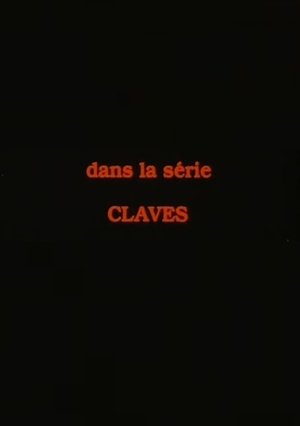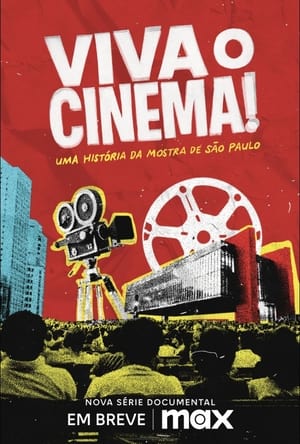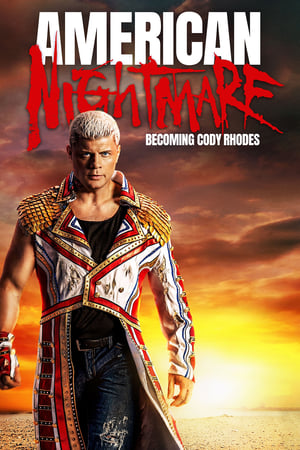

Claves, 4: Memories of Cuban cinema(1984)
Documentary in four parts on Latin American cinema. Fourth episode: in Cuba, the ICAIC, created in the aftermath of the Castro revolution, is at once a film school, a production company and a state cultural branch. Cuban filmmakers testify to the situation and themes specific to their national cinema.
Movie: Claves, 4: Memories of Cuban cinema
Video Trailer Claves, 4: Memories of Cuban cinema
Similar Movies
 0.0
0.0Claves, 2: We will return younger(en)
Documentary in four parts on Latin American cinema. Second episode, evoking the border between fiction and documentary. With his film Tire dié (1960), the Argentinian Fernando Birri proposed this manifesto: to create a realistic and critical national cinema, closer to society without falling into populism.
 0.0
0.0Viva o Cinema! Uma História da Mostra de São Paulo(pt)
The series tells the story of the São Paulo International Film Festival, one of the most traditional cultural events in Latin America. For 48 years, the festival has showcased hundreds of films from all over the world, bringing vibrancy to the city. Filmmaker Marina Person provides an irreverent perspective, highlighting the exciting and unusual stories that have marked the festival’s journey of resistance. The series reveals the individuals who have embraced the challenge of organizing this significant cultural event in Brazil every year, despite often challenging conditions. We also delves into how the Mostra has grown to become one of the main festivals globally, shedding light on the changes in cinema, Brazil, and the world over the years.
 0.0
0.0Claves, 3: Small mother country, great mother country(en)
Documentary in four parts on Latin American cinema. Third episode: from the 1960s, France and Europe showed a real enthusiasm for Latin American cinema, but the latter remained hampered by numerous economic and political obstacles.
 0.0
0.0Claves, 1: How Tasty Was My Little Frenchman(en)
Documentary in four parts on Latin American cinema. First episode: the influences of Cahiers du cinéma, the New Wave, Italian neorealism. In Brazil, Cinema Novo draws inspiration from these models while drawing on the historical and cultural singularity of the country. The documentary was awarded the Prix Makhila d’or at the Festival de Biarritz, France.
 4.8
4.8La Perra(es)
In Bogota, a bird-girl leaves behind the family home, her domineering mother and faithful dog to go and explore her sexuality.
 0.0
0.0Grandma, Please Tell Us About the Holodomor(uk)
This is a story about generations and the importance of preserving historical memory. The grandmother of one of the protagonists, Svitlana Zalishchuk, left behind a diary in which she recorded her memories of the terrible times. Veronika, a 12-year-old girl from Uman, and her mother made a film for the Autumn on Pluto 2.0 project about her grandmother Ksenia Logvyniuk, who told us where people found food and how they escaped starvation. Sasha, another 12-year-old protagonist of the film, did not find her great-grandmother alive, but she recreated her relative's experiences based on her father's stories.
 0.0
0.0Curious People: An Incomplete History of Nine Lessons & Compendium(en)
Almost two decades after comedian Robin Ince’s original idea to mash up science with comedy, music and culture in a new variety show, Nine Lessons and Carols for Godless/Curious People and Robin and Brian's Christmas Compendium of Reason are still here brightening the dark days of winter with a joyous celebration of all things curious and creative. This feature length documentary charts the evolution of those pioneering and legendary science variety nights that have attracted legions of fans both on and off the stage and raised hundreds of thousands of pounds for charity. With loads of exclusive interviews and never before seen behind the scenes footage we look at how one person's 'stupid idea' ended up changing the shape of science communication and entertainment forever, moving science from the classroom to arenas.
 0.0
0.0Nallar och människor(en)
A group of teddybears awaken in the attic after years of storage. Store-Nalle (Big Teddy) explains the history of the species, from the very first teddybears manufactured in Germany. Other segments include dramatizations of the directors' childhood memories, as well as interviews with several stuffed animal owners.
 0.0
0.0A Good Year(uk)
A year ago, on 29 December 2019, prisoners were exchanged with the self-proclaimed ‘LPR’ and ‘DPR’. Among the Ukrainians who returned home were journalist Stanislav Aseyev, tanker Bohdan Pantiushenko, and human rights activist Andriy Yarovoi. Four months earlier, on 7 September, Crimeans Oleg Sentsov and Oleksandr Kolchenko were released from Russian colonies. We spoke to the former prisoners about their first year of freedom.
 0.0
0.0Red Backpacks(uk)
Boy Andrii who together with a faithful friend - a boxer dog - goes on a unique journey through Bessarabia. According to the task of the grandfather-scientist, a young hero and a friend named Rei, it is necessary to find rare and endangered animals from the Red Book. In addition to photos of representatives of the fauna, they will discover new territories for themselves. The feature film was edited from five episodes of the documentary project of the same name. The project included five program series for young and middle school children.
 7.8
7.8American Nightmare: Becoming Cody Rhodes(en)
This intimate and revealing documentary follows professional wrestler, Cody Rhodes, from leaving the WWE to his eventual return to WrestleMania and his journey chasing the WWE championship一a feat his father, "The American Dream" Dusty Rhodes, never accomplished.
 0.0
0.0So Unreal(en)
A cinephile collage, both historical and philosophical, of films on artificial intelligence, cyberspace and virtual reality, from 1981 to 2001: cinema as a way and an instrument to cope with humanity's euphoria, anxiety, fear and obsession with technology.
 8.0
8.0Jane Birkin et nous(fr)
Jane Birkin has forged a unique bond with France and the French. Between the small Englishwoman, muse of Gainsbourg, then of Doillon or Chéreau, and her adopted country, love at first sight was immediate and lasted for more than fifty years. This documentary goes back, through the prism of this unique bond, to the life and career of a peculiar artist in the French musical and cinematographic landscape. The intimate portrait of a freedom-loving woman.
 0.0
0.0In the Deed the Glory: Memorial Stadium(en)
Lincoln, Nebraska, is home to a college football cathedral. For 100 years, a once simple stadium has become hallowed ground for a sport and a state. Memorial Stadium, home of the Nebraska Cornhusker football team, is a mecca of the sport. On Saturdays in the fall, the fans that fill the stadium make it the third largest city in the state. Take a look at 100 years of Memorial Stadium.
The Drum(en)
With the resurgence of taonga pūoro, one musical instrument remains conspicuously absent from Māori music —pahū (drum). In this documentary Te Pahū, composer Hirini Melbourne (ONZM) and ethnologist Te Warena Taua trace the history of pahū, from musical accompaniment to being the manawa (heart) of communication and communities. Musicians and carvers bring to life the lost beat of pahū by creating a version using modern techniques. Pioneering Māori filmmaker Merata Mita (Patu!) directed Te Pahū, while Rawiri Paratene (Whale Rider) co-wrote and produced it.
Pākiri: The Filmmaker, the Cook & the Singer(en)
As the name of this short film promises, a filmmaker (Merata Mita), a cook (Anne Thorp) and a singer (Moana Maniapoto) sit down for an interview at Pākiri beach. With a focus on their personal lives, these highly accomplished wahine Māori are generous in sharing what motivates and challenges them in their mahi — with friendship a recurring theme. Filmed a year after the disbanding of her group Moana and the Moahunters, Maniapoto is particularly vulnerable in her reflections. The film was made by Honours student Sam Cruickshank as part of a Film and Media Studies degree at Auckland University.
Kaleidoscope(en)
This Kaleidoscope documentary timed in with the release of Nicholas Reid’s book A Decade of New Zealand Cinema. The book cherrypicked Reid's favourites from the renaissance in local movies that began with Sleeping Dogs in 1977. Reid and a who’s who of local filmmakers discuss many of the 50+ features from the previous decade (with Bruno Lawrence ever present). They ponder the uniqueness (or otherwise) of Kiwi film. A fondness for rural and small town settings, and forceful, often conflicted, male leads is explored. Neglected areas — Māori film and more of a voice for women — are traversed.
 0.0
0.0The Mobilized Generation(en)
A short documentary chronicling the coming-of-age story of generation z punctuated by numerous culturally significant moments, known as period effects, that have bred a generation of young activists.


